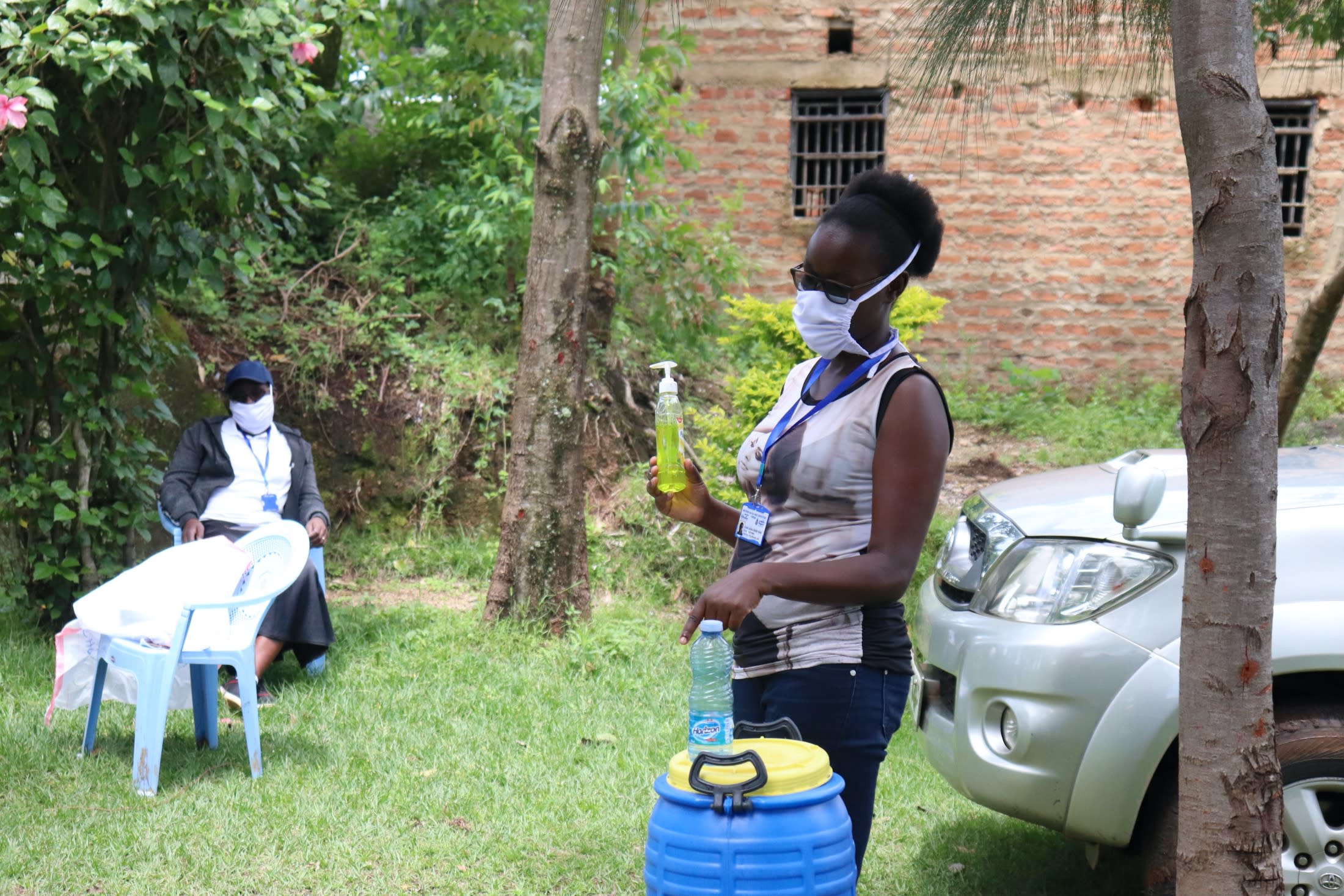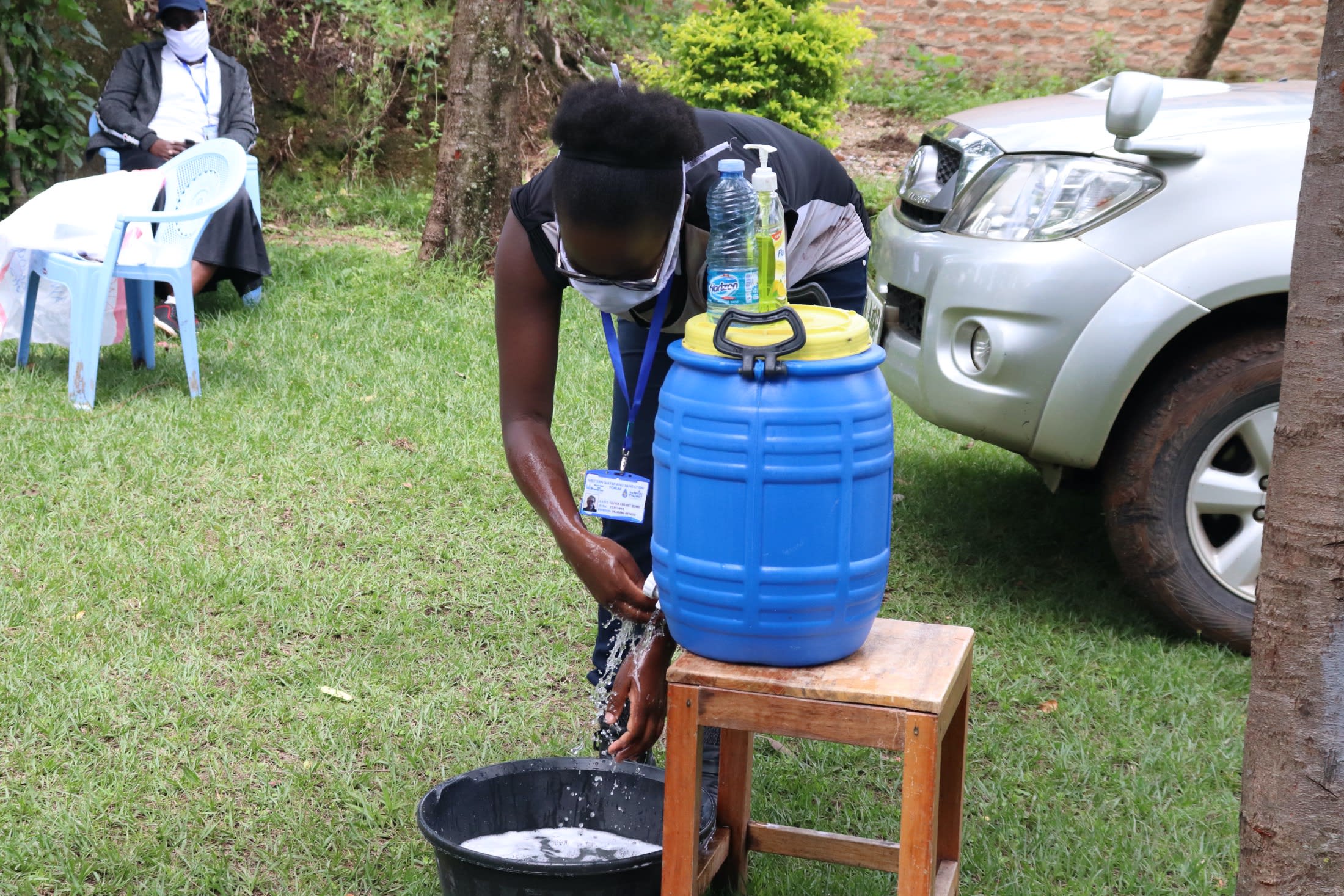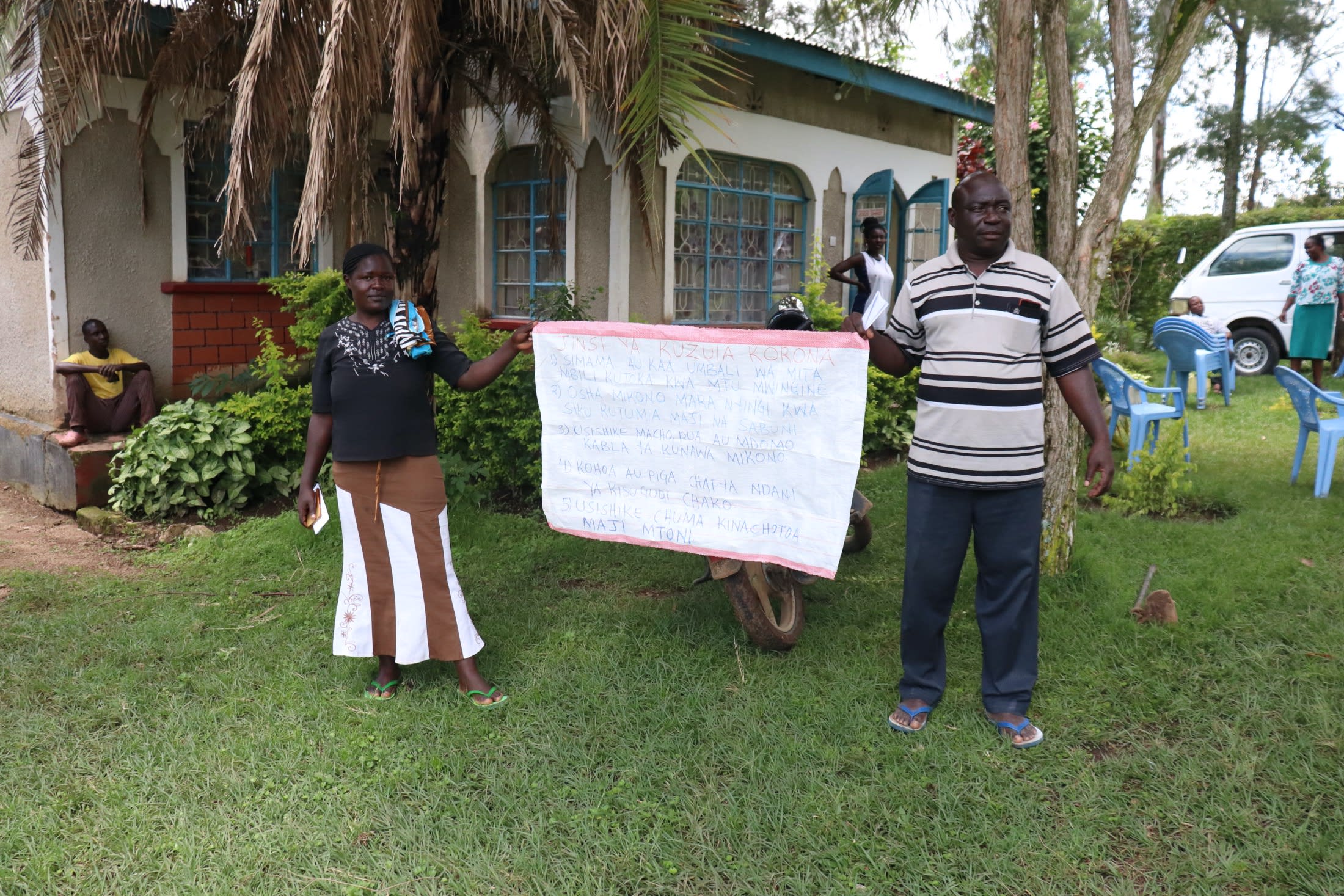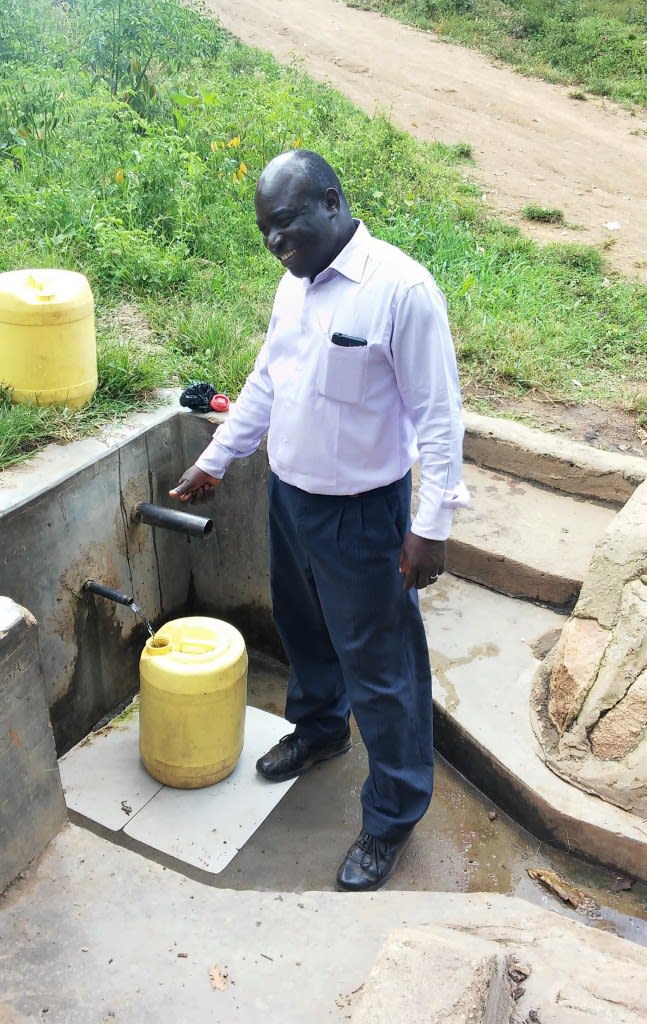This project is a part of our shared program with Western Water and Sanitation Forum (WEWASAFO). Our team is pleased to directly share the below report (edited for clarity, as needed).
Welcome to the Community
This unprotected spring is located in Ebwambwa Village, Sheywe location, Sichirai sub-location, Kakamega Central of Kakamega County.
A normal day for the people living around Mwibichiri Spring starts when the women wake up to go fetch water for preparing breakfast and doing chores. Children are left to go to school as husbands and wives go to work on their farms.
The area around Mwibichiri Spring is densely populated. There are 100 households that make up a whopping total population of 799 people, all who rely on this unprotected spring as their sole water source. (Editor’s Note: While this many people may have access on any given day, realistically a single water source can only support a population of 350-500 people. This site would make a great location for a second project. To learn more, click here.)
This community heard about this kind of water project that would protect their spring, and immediately sent in their application. After our first visit, we were able to gather the details shared below to determine that the people around Mwibichiri Spring need both training and their spring protected. They are in dire need!
Water Situation
An unprotected spring is open to contamination from many different sources. When it rains, dirt and waste washes downhill into the spring. If there's nearby farming, chemical fertilizers end up in the spring and pose a huge threat to whoever drinks the water. In this case, that's almost 800 people. There are households near the spring, and these households have dug pit latrines to serve their families, unaware that the waste has a high chance of mingling with groundwater shared by their spring!
In the pictures, you'll see that the spring looks like a muddy puddle. Since the water is so obviously dirty, mothers boil water before offering it to their families. However, with such a high level of contamination, these families still suffer from recurring cases of typhoid, cholera, stomachaches, and diarrhea.
Women and children fetch water by dunking small containers like cups to fill larger containers, such as jerrycans or buckets. Without constant cleaning of these water containers, the containers can also introduce more dirt and germs to the spring's water. During the dry season, community members must fetch water at night to avoid long lines, agitation, and fighting around the spring.
Sanitation Situation
No more than half of the 100 households have their own pit latrine. The condition of all the latrines we observed was poor, so poor that using the latrine is dangerous. You can see examples of these latrines in the pictures under the "See Photos & Video" section. One picture shows a latrine with wooden slats suspended over the pit. These boards rot, increasing the chance that a user could fall through at any time.
Since hundreds of people don't have a latrine for their own use, they have to find the privacy of bushes and trees. This becomes some of the waste that is washed into the spring during rain!
Not many homes have bathing rooms either, places that provide privacy for washing up, brushing teeth, and other personal hygiene activities. Out of the one hundred households, we couldn't find a single hand-washing station. At the very least, community members can be taught about how to build a simple dish rack and clothesline to dry their things.
Plans: Hygiene and Sanitation Training and Sanitation Platforms
Community members will be trained for four days on a variety of health, hygiene and sanitation topics. This training will result in community members donning the roles of health workers and water user committee members. The training facilitator plans to use PHAST (Participatory Hygiene and Sanitation Training), CLTS (Community-Led Total Sanitation), and ABCD (Asset-Based Community Development) methods to teach community members, especially the women and children who feel the burden of household responsibility. Training will equip each person with the knowledge needed to practice viable and effective health solutions in their homes and at the spring.
By the end of training, participants will also have identified five needy families to benefit from sanitation platforms. These are concrete floors for latrines that are safe and easy to clean. Five new places to use the bathroom will help create a cleaner living situation for the entire community.
Plans: Spring Protection
Locals are eagerly preparing for this spring protection project. They have agreed to gather the local materials needed for construction to begin, which include sand, ballast, hardcore, bricks, fencing poles, and even a few helpful hands!

 Protected Spring
Protected Spring
 Rehabilitation Project
Rehabilitation Project































